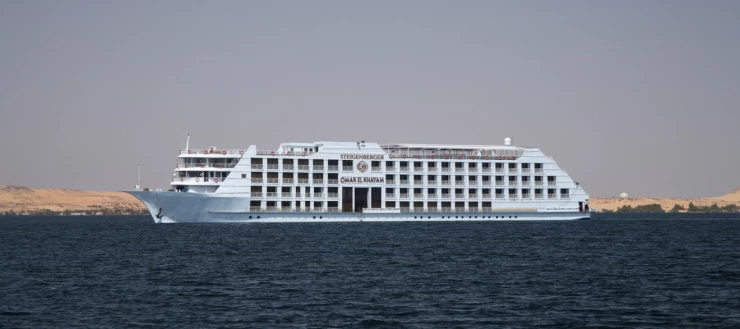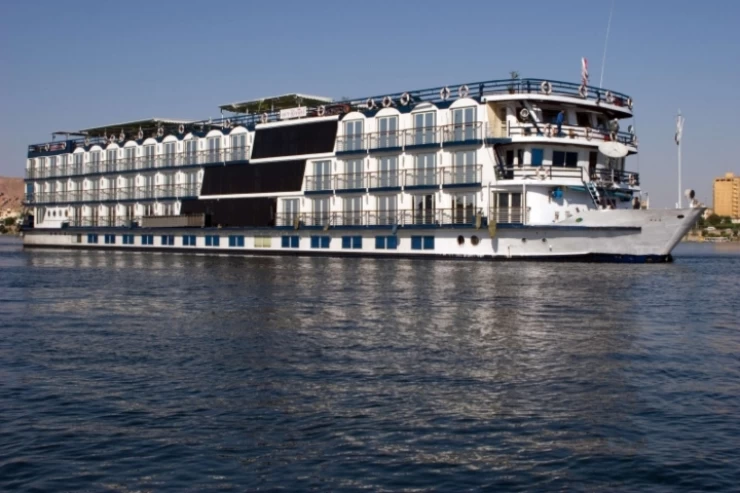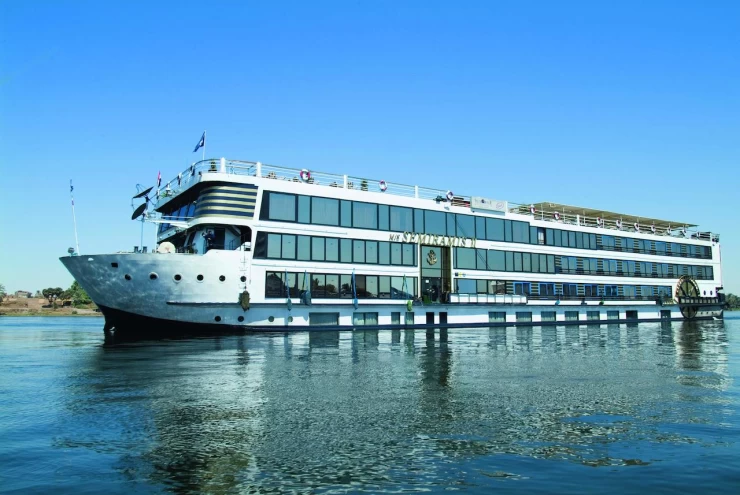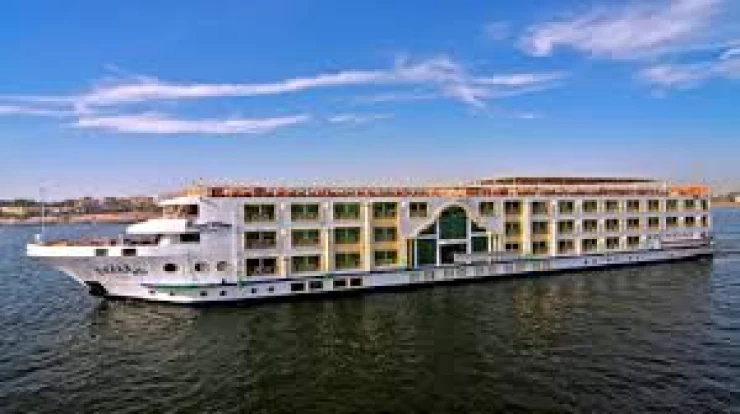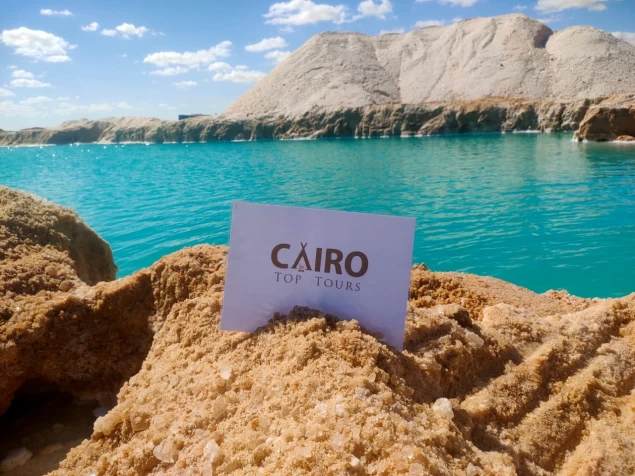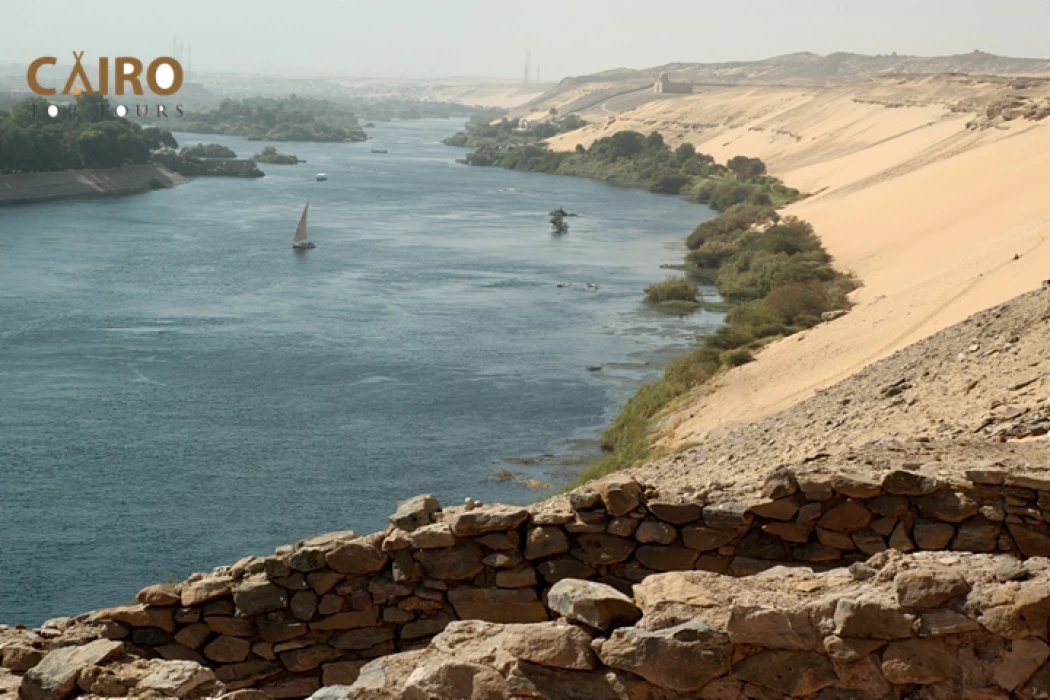
Lake Nasser
Lake Nasser: Egypt's Vast Reservoir of Life and History
Isolated in the desert through southern Egypt and northern Sudan, Lake Nasser now functions as a huge man-made reservoir. Thanks to the High Dam constructed at Aswan on the Nile River, the lake became a valuable engineering achievement and is now an important resource for that region. Lake Nasser is contentious for what it has done, but it is essential to Egypt’s water management, attracts many species of animals, and is valuable for its history.
Formation and Geography
As soon as the Aswan High Dam was built in 1970, Lake Nasser was formed. To manage the yearly floods, supply clean water for planting, and create an electricity supply, the dam was constructed. As the dam was being finished, the Egyptian desert began to absorb Nile waters and formed a lake that extends over 500 km (310 miles) and is widest at 16 km (10 miles).
The shape of the lake (over 5,200 square kilometres) and its capacity (up to 132 cubic kilometres) make it important for Egypt’s agricultural needs and electrical power. It helps protect us during droughts by offering us a water store when there is little rain.
Economic Importance
Lake Nasser has a big impact on Egypt’s economy. A great deal of fresh water from the Nile is used to irrigate the land in Upper Egypt, changing wasteland into places where farming is possible. For thousands of Egyptians, including farmers and fishermen, the reservoir makes it possible to earn a living.
Especially, there is a great demand for fishing around the lake. Many Nile perch, tilapia, and catfish inhabit the waters of Africa’s lakes. Egypt has established fish farms and assists local fishermen to help protect the environment when they fish. Years of harvesting from Lake Nasser have supplied both the local population and export markets with large quantities of fish.
The dam at Aswan produces a lot of the country’s electricity, which improves Egyptian infrastructure and makes it less reliant on fossil fuels. Thanks to the dam’s hydroelectric power, people in remote southern Egypt now have access to electricity, helping to improve many people’s lives.
Cultural and Historical Impact
While many benefits have resulted from the formation of Lake Nasser, this achievement has also led to important cultural and historical losses. During the reservoir’s filling, dozens of temples and settlements from the past were submerged. Save the Abu Simbel Temples: UNESCO and Countries Work Together
Because of the lake, Pharaoh Ramses II’s temples were constructed in the thirteenth century BCE and later carefully moved to a safer, higher location. Temples such as the Temple of Philae were rescued in the same way. Moving these monuments across borders was very difficult and a great example of how the world community could work together in heritage conservation.
Even with those efforts, lots of small sites and entire Nubian villages still ended up under the lake’s waters. The communities’ relocation to unfamiliar places affected how they lived and soon brought about cultural and social problems for them.
Ecological Significance
Lake Nasser is now an important point for birds on their way between Europe and Africa. Still a man-made environment, the lake’s ecosystem hosts many species, and some of them now live well here.
Still, there are worries about the environment. The storage of silt behind the Aswan High Dam has made the Nile Delta less fertile than before. The release of pollutants from agricultural land and overfishing may weaken the ability of the lake to remain sustainable.
Tourism and Future Prospects
People now visit Lake Nasser for ecotourism and for adventure travel. Tours on cruise boats include adventures to out-of-the-way Nubian communities along the lake as well as visits to special temples. Lesser-known experiences like fishing and bird watching, as well as tours in the desert, draw a small group of tourists to southern Egypt.
Moving forward, the government is looking for ways to use the lake to its greatest advantage while addressing its environmental and social issues. Water conservation, unpolluted fishing in the lake, and responsible cultural tourism are efforts to preserve Lake Nasser for future generations.







